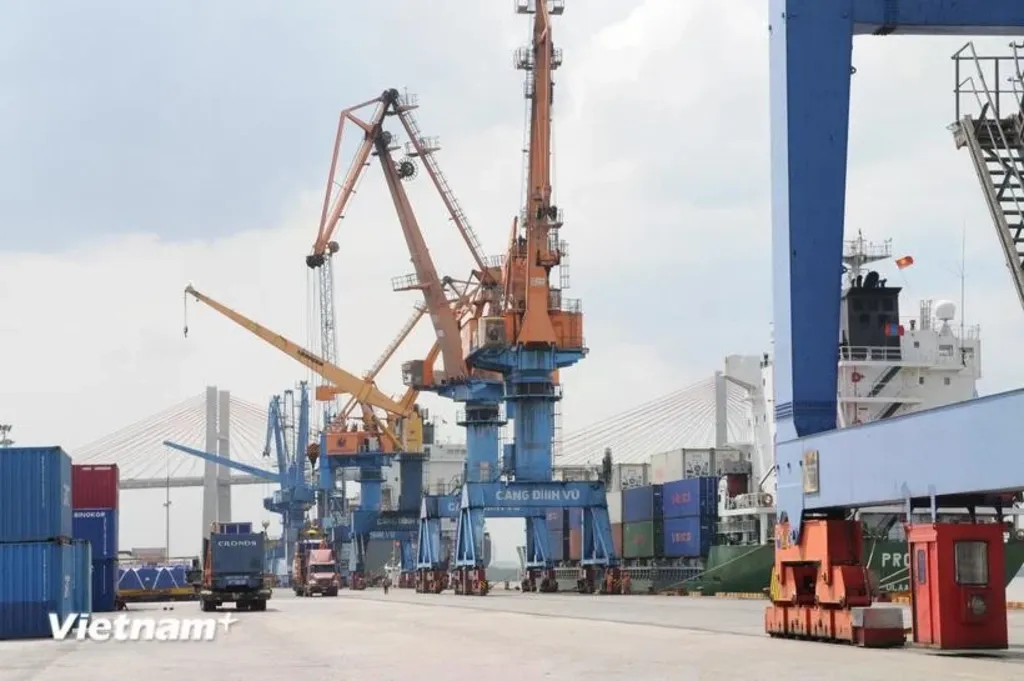 |
| businesses must proactively and flexibly adapt, exploring new markets__Photo: VNA |
Amid global trade volatility, especially after the US announced its new tariffs on April 2, businesses must proactively and flexibly adapt, exploring new markets, insiders said, considering this an optimal solution to minimize losses.
Proactive production based on market signals
On April 2 afternoon, US President Donald Trump signed an executive order imposing reciprocal tariffs on dozens of economies, effective from April 9. Vietnam faces a tariff rate of up to 46%.
According to Do Ngoc Hung, head of the Vietnam Trade Office in the US, the tariff imposed on Vietnam is significantly high, second only to Cambodia's 49%.
Immediately after the US announced the tariff list, the Vietnam Trade Office contacted the US Trade Representative (USTR) to better understand the basis for the calculations and other relevant details, he said.
Ngo Sy Hoai, Vice Chairman and Secretary General of the Vietnam Timber and Forest Products Association (VIFOREST), stated that the Vietnamese government's issuance of Decree 73/CP on March 31 on reducing import tariffs on certain goods—including setting the import tax on all US wood products to 0%—is expected to support sustainable Vietnam-US trade relations and help the timber industry avoid higher tariffs.
Businesses should proactively diversify their export markets in order to prepare for unexpected events in the context where there is a trend of trade liberalization, alongside a rise in protectionist measures, and increased technical and trade barriers in major markets, he said, adding that it is also essential to strengthen trade defense capability.
Nguyen Xuan Duong, Chairman of the Board of Directors of Hung Yen Garment Corporation, said Vietnamese enterprises stand ready to face potential tariff increases from the US.
According to Duong, companies are gradually shifting towards FOB (Free on Board) production so that customers can share the tax burden. They have also targeted potential markets such as Russia, Australia, and New Zealand, as well as leveraging the tax reduction roadmap through free trade agreements (FTAs) signed with Europe to boost exports.
Complementary goods structure
The economic, trade, and investment pillar serves as a key driver in advancing the bilateral relations between Vietnam and the US. According to the Vietnamese Ministry of Industry and Trade (MoIT), the two-way trade reached nearly USD 150 billion in 2024, up 20.5 percent from the previous year. The US becomes Vietnam’s second-largest trading partner and one of its most critical export markets, while also emerging as a key supplier of machinery, equipment, technology, and energy for Vietnam.
The total value of economic and trade agreements signed between Vietnamese and US businesses, set to be implemented from 2025, is estimated at about USD 90.3 billion , creating hundreds of thousands of jobs for laborers of the two countries.
Minister of Industry and Trade Nguyen Hong Dien emphasized Vietnam’s consistent policy of fostering a balanced, sustainable, stable, and mutually beneficial economic and trade ties with the US. He also stated that Vietnam has no intention of creating any obstacles that can harm laborers, economic security, or national security of the US.
The Vietnamese government is proactively implementing various specific measures to promote comprehensively and sustainably economic, trade, and investment relations with the US.
Vietnam is also taking specific measures to achieve a balanced and sustainable trade relationship with major partners such as the US and the EU. Therefore, establishing a strategic and effective trade control mechanism will provide a solid foundation for increasing imports of high and core technologies from these markets, thus ensuring trade balance.
For the US market, Nguyen Cam Trang, Deputy Director General of the Agency of Foreign Trade under the MoIT, said that the ministry has been providing timely information to businesses, helping them stay updated on market fluctuations and key policies of import markets, thus enabling them to proactively plan their production and business strategies.
She advised businesses to be proactive and flexible in their production and exports, noting that it is necessary to align their operations with market signals.- (VNA/VLLF)









